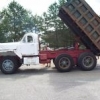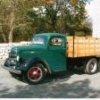Quadruplex shifting practice in B42
-
Similar Content
-
- 13 replies
- 4,992 views
-
- 13 replies
- 5,350 views
-
SOLD Mack quadruplex, 20/18 speed, transmisson, NOS, stampedTRQ7220, 1P1173, 11KBA5648, AP61 (Left side)
By SDM,
- 1 reply
- 5,927 views
-
- 5 replies
- 2,929 views
-
- 0 Comments
- 1,676 views
-
-
Recently Browsing 0 members
- No registered users viewing this page.







Recommended Posts
Join the conversation
You can post now and register later. If you have an account, sign in now to post with your account.